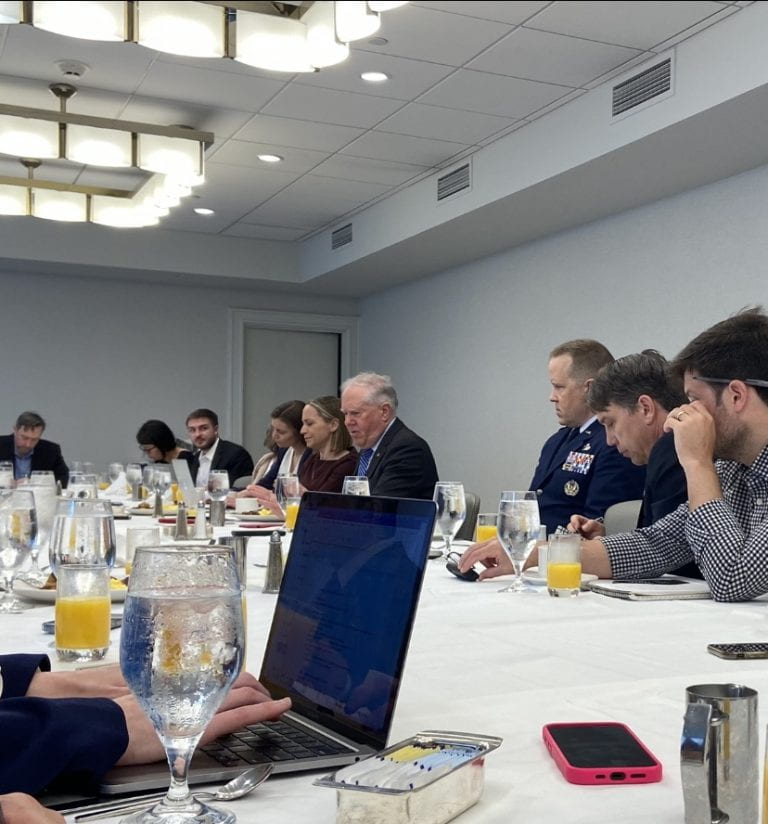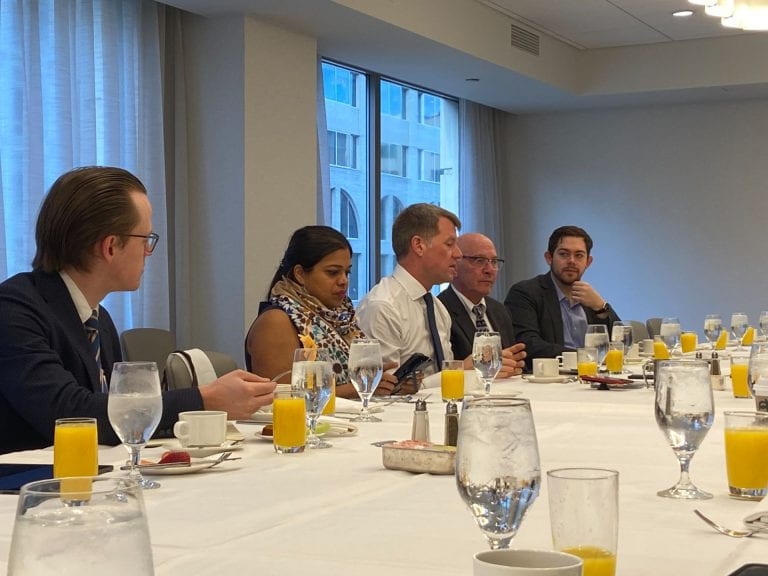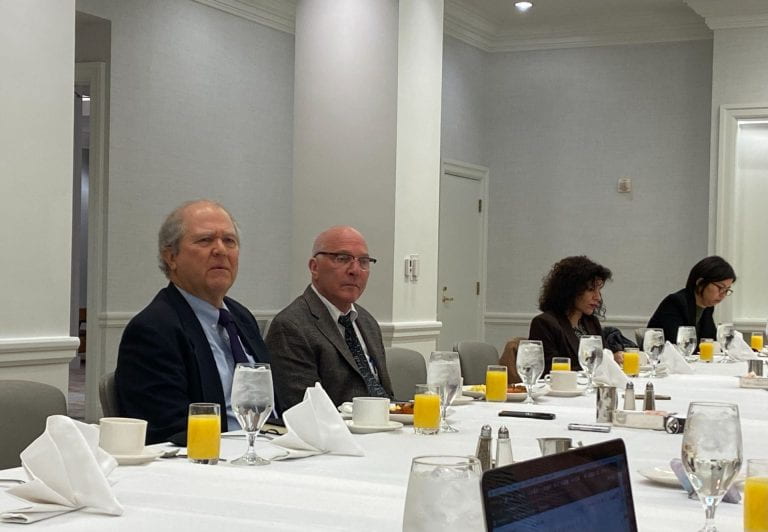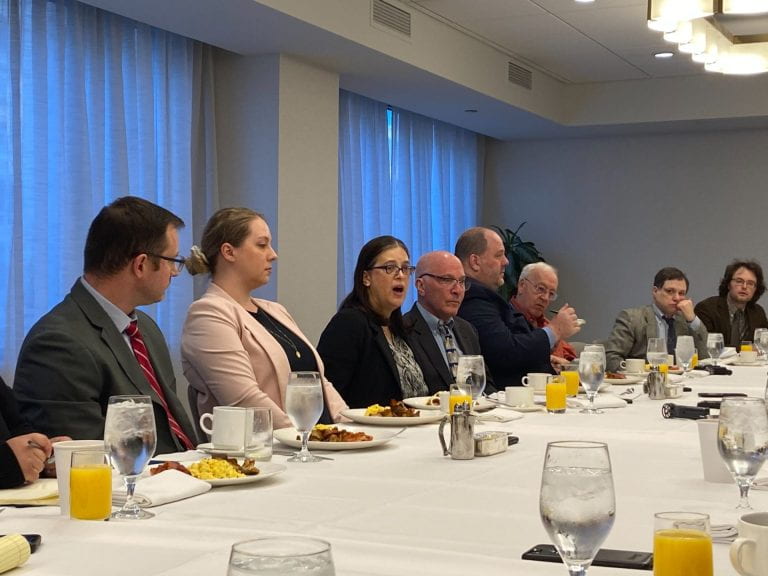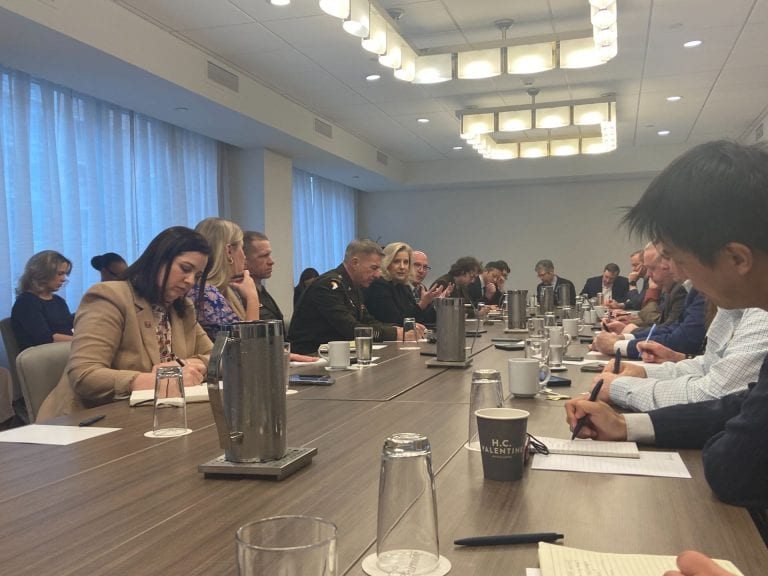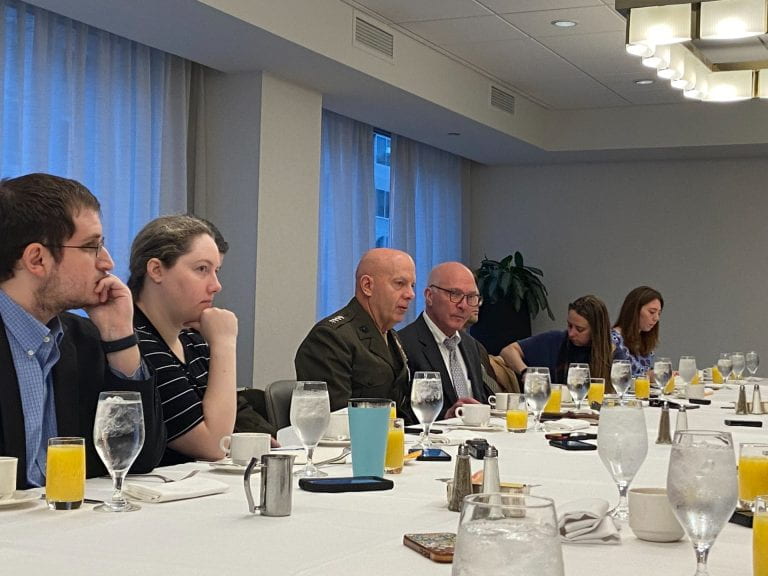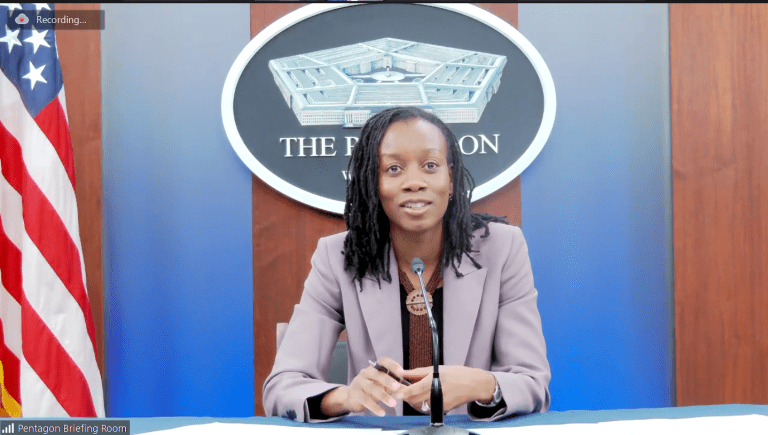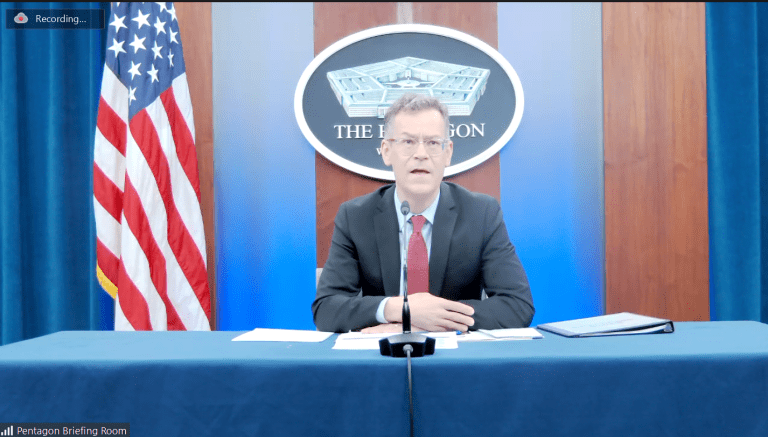Stephen Losey of Defense News
WASHINGTON — Training Ukrainian pilots to fly F-16 fighters is a key step in building that nation’s future air force, U.S. Air Force Secretary Frank Kendall said Monday — but he doubts Fighting Falcons will change the course of Ukraine’s war against Russia.
F-16s “will give the Ukrainians an increment of capability that they don’t have right now,” Kendall said in a breakfast roundtable with reporters hosted by the Defense Writers Group. “But it’s not going to be a dramatic game-changer, as far as I’m concerned, for their total military capabilities.”
Kendall saidthat while F-16s will help Ukraine, they won’t fundamentally alter the balance of power in the war. Effective ground-based air defenses on both sides have meant airpower has not played a decisive role in Russia’s invasion of Ukraine, Kendall said, and fighters have been used in fairly limited ways as a result.
For more than a year, Ukraine has repeatedly asked the United States and Europeannations to provide fourth-generation F-16s or other fighters. Those requests were always rebuffed.
The situation changed last week, when President Joe Biden announced the United States would support training Ukrainian pilots to fly F-16s, paving the way for Ukraine to receive those fighters.
At Monday’s breakfast, Kendall said Ukraine has been “very understandably unrestrained” in their requests for weapons and hardware such as F-16s from the United States and other nations.
But other weapons packages to Ukraine have been “incredibly useful” in thwarting Russia’s initial drive to seize Kyiv and much of the country, he said, and then pushing Russian forces out of much of the territory it claimed in theearly months of the war. Ukraine has used Western weapons such as High Mobility Artillery Rocket System, or HIMARS, precision rockets and Javelin anti-tank weapons to devastating effect against Russia.
Kendall said the West prioritized sending Ukraine those weapons that would be most effective on the battlefield, before shifting focus to laying the groundwork for a future Ukrainian air force.
He said providing fighters such as F-16s “is seen by some as an escalatory act on our part.”
Speed was also a factor in deciding which weapons to concentrate on first providing to Ukraine, Kendall said. Getting significant quantities of fighters into Ukrainian hands would take months at best, he said, so instead the West looked for armaments that could be more quickly shipped.
Kendall reiterated comments he and Air Force Chief of Staff Gen. CQBrown made in July 2022 that eventually, Ukraine will have to move away from its current force of Russian-made Sukhoi Su-27 Flanker and MiG-29 Fulcrum fighters and toward Western-made jets.
“Ukraine is going to remain an independent nation,” Kendall said. “It’s going to need a full suite of military capabilities. And so it’s time to start thinking longer-term about what that military might look like, and what it might include.”
Kendall said the U.S. and other partner nations will work with Ukraine to “figure out a path” toward getting the jets — but it won’t happen soon. He said it will likely take at least several months for Ukraine to receive them.
Many details also have yet to be sorted out, Kendall added , such as where the F-16s will come from, and where their pilots will train.
“We’re just starting our conversations about how we’re going to move forward after the president’s announcement,” he said. “A lot of open possibilities [for training], including our partners.”
NBC News reported in March two Ukrainian pilots were at a military base in Tucson, Arizona, to help sort out how quickly the nation’s fighter pilots could learn to fly advanced fighters such as F-16s. The Air National Guard’s 162nd Wing in Tucson trains pilots from international partner nations to fly the F-16.
But Kendall was optimistic about Ukrainian pilots’ abilities to learn to fly the F-16, saying it would take “months, not years.”
“They’re very motivated,” Kendall said. “Everything we’ve done with the Ukrainians, they’ve shown a capacity to learn. I don’t think I’ve ever seen more motivated individuals, in terms of wanting to get into the fight and make a difference.”
Others:
https://www.airandspaceforces.com/kendall-air-force-ngad-design/
https://tass.com/world/1621347
https://www.airandspaceforces.com/kendall-f-16s-not-game-changer-ukraine/
https://www.defenseone.com/policy/2023/05/f-16s-would-offer-no-fundamental-change-ukraines-war-effort-usaf-secretary-says/386645/https://defensescoop.com/2023/05/22/kendall-vows-air-force-ngad-program-wont-repeat-serious-mistake-associated-with-the-f-35/
https://www.airandspaceforces.com/kendall-digital-engineering-over-hyped-20-percent/
https://www.voanews.com/a/latest-in-ukraine-zelenskyy-visits-troops-in-donetsk/7105080.html

